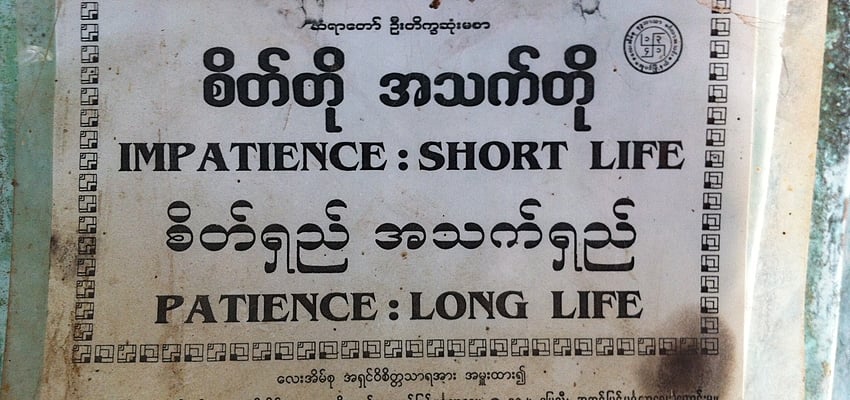Description of the Burmese Language
For the theoretical side, a little bit boring I know, but I have to address it as a linguist, the Burmese language is spoken by 32 million people, almost 70% of the population speak it as their mother tongue and nearly 10 million speak it as a second language. There are more than 130 recognised ethnic groups and as many languages spoken including Shan, Karen, Kachin, Chin, Mon and Rakhine which are the most common and recognised by the authorities.
This language is of Tibeto-Burman and Sino-Tibetan origin, of the tonal kind, like the majority of the languages spoken in the regions of South-East Asia and the Pacific (because the vocal chords are easier to manipulate in hot and humid conditions). Burmese is essentially monosyllabic. Its lexicon includes words from Pali (the European language vehicle of Theravada Buddhism).
A unique language of its type.
When you begin your journey in Myanmar, one the first things that catches your eye is the writing style used. You should be aware that this writing, on a succession of 0 advertising panels and shop fronts, of which you cannot decipher a single letter is writing that is derived from Indian scriptures and ancient forms of Burmese from the Xth and XIth centuries. The vocabulary used in the written word will always be longer and richer than in the spoken word.

Once there, you will often find yourself in situations where you will be so amazed by one of the many wonders of this country that you will feel compelled to share your thoughts or thanks with the locals. Do not forget also that you should use the language to help yourself (directions, prices, information). In this case, some keywords will help you and even allow you to have a more realistic approach to the culture.
Phrases and words below are phrases that have been given by native speakers and we have tried to do the best translation phonetically. However, remember that there is no official translation into Latin script and that you may struggle to make yourself understood the first time. Do not give up, advice and corrections by the locals will help you to improve.
If you want to deepen your understanding of the subject, you will find more about the language of Myanmar on the web.
Consider one thing, when we go on holiday we speak English, when we go on a journey we speak another language, that of the Others.



